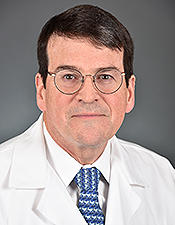Boston Children’s Hospital to receive $1.5M to initiate basic work to expand gene therapy treatment of sickle cell disease into developing countries
- Published:

Research will focus on adapting gene therapy for use in low-resource areas with high rates of the disease
Boston Children’s Hospital will receive a $1.5 million grant from the Bill & Melinda Gates Foundation to develop more efficient gene therapy treatments for sickle cell disease and methods that will enable gene therapy to be used in developing regions of the world with high rates of sickle cell disease.
“While gene therapies are currently confined to a few research hospitals in the U.S. and other developed countries, our long-term goal is to make this treatment available to patients in developing countries — and we have already begun to think about how to translate this specialized, potentially curative therapy,” says David A. Williams, MD, chief scientific officer and senior vice president of Boston Children's Hospital and President of Dana-Farber/Boston Children’s Cancer and Blood Disorders Center, who will lead the collaborative project with Drs. Paula Hammond of the Koch Institute, Christian Brendel of Dana-Farber/Boston Children’s, Harvey Lodish of the Whitehead Institute, and David Scadden at Massachusetts General Hospital.
Gene therapy delivers genetic material into a patient’s cells to replace faulty or missing genes — or adds new genes — in an attempt to cure diseases or to make changes so the body is better able to fight off disease. In particular, Williams hopes to adapt methods used in the current Dana-Farber/Boston Children’s gene therapy clinical trial for sickle cell disease, which suppresses a gene called BCL11A, enabling patients to make a fetal, non-sickling form of hemoglobin.
Like several other gene therapy trials for sickle cell disease, this form of gene therapy is ex vivo — meaning it involves removing blood stem cells from the body, treating them with a gene therapy vector, and then infusing the cells back into the patient. However, ex vivo gene therapy involves multiple complicated manufacturing steps, takes weeks to complete and requires significant hospitalization. In contrast, in vivo gene therapy involves direct injection of the gene therapy vector, carrying the desired gene, into the bloodstream or target organ. The goal of this work is to develop methods that allow in vivo gene therapy applications for sickle cell disease in areas of the world where health care is less developed than in the United States and Europe.
“Ultimately, an in vivo approach, in which a gene or inhibitory RNA is delivered directly to the body, is likely to be optimal for broadening global access to gene therapy for sickle cell disease,” says Williams. “Our vision is to apply our expertise in bioengineering and vector technology, hematology and stem cell engraftment with minimal marrow conditioning, and closed and simplified manufacturing to ‘commoditize’ gene therapy.”
Sickle cell disease is a major public health concern in the developing world, leading to high rates of mortality and life-long morbidities. An estimated 275,000 infants are born annually with sickle cell disease worldwide, with more than half of those in developing countries dying in early childhood. At the same time, the global cost of sickle cell disease is increasing as fewer children die from infectious diseases with the broadened use of prophylactic antibiotics in children with this disease. The impact of the disease is greatest in sub-Saharan Africa and India. It is estimated that in the U.S., more than $1 billion per year is spent on care of individuals with sickle cell disease.
Under the grant, Williams and colleagues will conduct research in gene delivery methods to solve current bioengineering and manufacturing constraints.
“We will look at new technologies of non-viral methods for introducing the therapeutic gene into stem cells that could help standardize gene therapies and make them more available and affordable,” says Williams.
About Boston Children’s Hospital
Boston Children’s Hospital, the primary pediatric teaching affiliate of Harvard Medical School, is home to the world’s largest research enterprise based at a pediatric medical center. Its discoveries have benefited both children and adults since 1869. Today, more than 3,000 scientists, including 8 members of the National Academy of Sciences, 18 members of the National Academy of Medicine, and 12 Howard Hughes Medical Investigators comprise Boston Children’s research community. Founded as a 20-bed hospital for children, Boston Children’s is now a 415-bed comprehensive center for pediatric and adolescent health care. For more, visit our Discoveries blog and follow us on social media at @BostonChildrens, @BCH_Innovation, Facebook, and YouTube.

 Translate
Translate